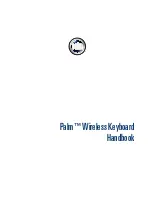
Disk Mode
Saving Files
13-26
auditioned from this page become the Current Song (as seen on the
Song Mode
page).
Once auditioned, the above object types remain active on the keyboard until another object is
auditioned, or
Cancel
is pressed. If a song is being auditioned, no other objects are auditioned
until the song audition is stopped (by pressing one of the Left or Right cursor buttons).
Saving Dependent Objects
When you save a Þle, you may see a prompt as part of the Save dialog that asks you whether
you want to save dependent objects. A dependent object is simply an object thatÕs associated
with another object. The dependent object can be stored in a different memory bank, for
example, a RAM sample with ID 301 thatÕs used in a program with ID 402, or in the same bank
as the Þle being saved. Rather than forcing you to save dependent objects separately and to
keep track of them yourself, the K2vx gives you the option of automatically saving the
dependent objects as part of the Þle you save. When you load the Þle again, the dependent
objects will be loaded along with the objects to which theyÕre attached.
There are a few things to keep in mind regarding dependent objects. First, itÕs not uncommon
for RAM samples to be dependent objects, and they can take up quite a bit of memory. If you
save a RAM sample as a dependent object when you save a bank of programs to disk, you may
create Þles which wonÕt Þt onto a 720K or 1.4M ßoppy disk. Since the K2vx canÕt format ßoppy
disks in the middle of a save operation, you should have spare formatted disks ready to go
before you start saving. See the section called ÒSplit FilesÓ on page 13-23.
While the K2vx makes it easy for you to keep track of your dependent objects, you need to keep
aware of what happens with dependent objects when saving to disk and reloading. Consider
this example. Suppose you create 30 new programs, each of which uses a keymap containing
four different RAM samples. If you save these programs to a disk Þle, and save dependent
objects with them, youÕve created a Þle containing 30 programs and 120 dependent RAM
samples. So far, so good. Suppose you then load that Þle into the 300s bank. The K2vx will load
the 30 programs into the 300s bank just Þne, but it will be able to load (at most) only the Þrst 100
dependent objects to the 300s bank (each memory bank can hold a maximum of 100 objects of a
given type). The remaining 20 dependent objects will be loaded into the 400s bank. If there are
no objects of the same type in the 400s bank, thereÕs no problem. But if there are objects of the
same type in the 400s bank, some or all of them will be replaced by the newly loaded
dependent objects.
The easiest way to prevent this is to make sure that you donÕt create more than 100 dependent
objects attached to the other objects in a given memory bank. The easiest way to do
this
is to
avoid creating dependent objects when possible, by saving objects with IDs in the same
memory bank as the objects to which theyÕre related. For example, if you create a program that
uses RAM samples, and you save the program with ID 201, resaving the RAM samples used by
that program with IDs in the 200s will prevent dependent objects from being created for that
program. If you do this, youÕll minimize the number of dependent objects you create, and
youÕll be unlikely to force dependent objects to be loaded into a higher-numbered memory
bank when you load Þles.
Once you have selected objects for saving (either individually as just described or by bank
selection), the K2vx will determine if any of the items chosen to save have any dependent
objects in RAM that were not chosen. For instance, if you select a program to be saved and
nothing else (using the Save Object feature), the program may have dependent effects,
keymaps, and samples that are in RAM. Dependent objects that are in ROM (i.e., ROM
samples or keymaps) do not get saved to disk.
You will see the following dialog displayed if there are any dependent objects in RAM of any
objects that were selected for saving:
Содержание K2500RS
Страница 12: ...Table of Contents TOC 12...
Страница 16: ...Introduction How to use this manual 1 4...
Страница 32: ...User Interface Basics The Panel Play Feature K2vxR 3 8...
Страница 106: ...Effects Mode and the Effects Editor Configurations and Parameters 9 24...
Страница 186: ...Song Mode Recording Multi timbral Sequences via MIDI 12 52...
Страница 304: ...DSP Functions Hard Sync Functions 14 52...
Страница 394: ...Programs Setups and Keymaps K2500 ROM Keymaps 21 12...
Страница 402: ...LFOs LFO Shapes 23 4...
Страница 406: ...Note Numbers and Intonation Tables List and Description of Intonation Tables 24 4...
Страница 434: ...DSP Algorithms 26 14...
Страница 450: ...MIDI and SCSI Sample Dumps SMDI Sample Transfers 29 8...
Страница 464: ...Glossary 31 6...
Страница 490: ...K2vx Program Farm VOX K25 Appendix A 22...
Страница 494: ...K2vx Compatibility Converting programs from the K2vx to K2000 Appendix B 4...
















































